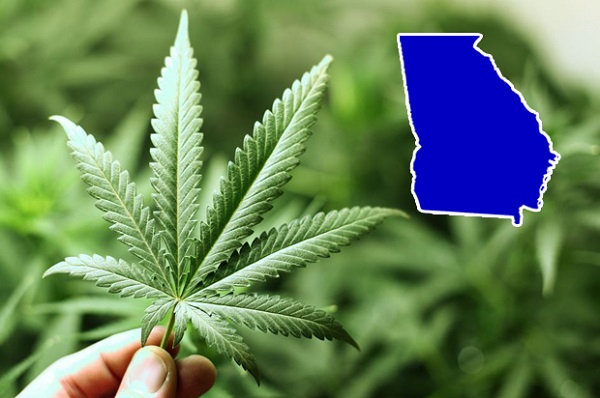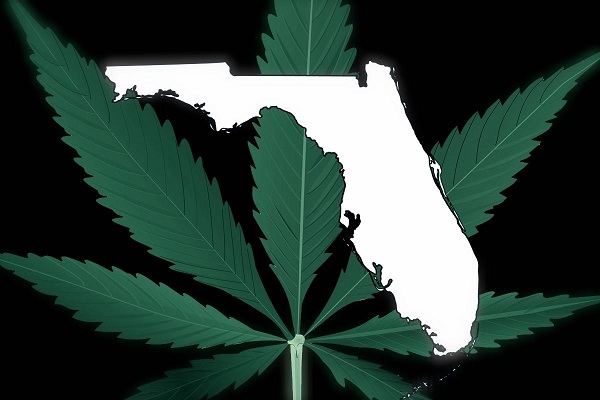The history of cannabis in the United States is still an incomplete mystery. To understand it, it is necessary to investigate the relationship between man and this plant from the earliest times. Despite the popular belief that Christopher Columbus brought cannabis to the Americas, there is evidence of its presence on the continent long before Columbus arrived.
There are not many publications and studies on the subject, but we can say that Cannabis sativa L. was on the continent before the Spaniards arrived, though not in large quantities.
There are many theories as to exactly when humans first visited the American continent. It is generally accepted that it happened about 14,000 years ago, when groups of people crossed the Bering Strait from Asia, where cannabis originated.
Homo sapiens
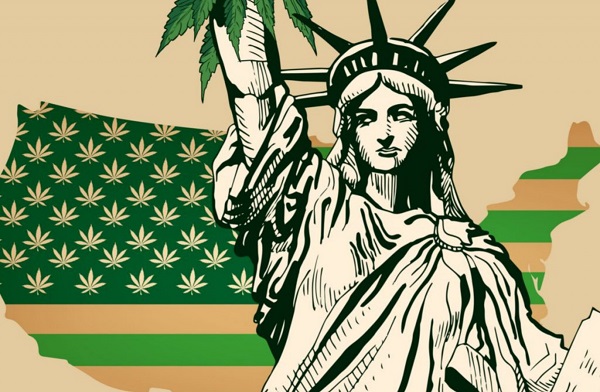
The plant subclass Rosidae arose about 100 million years ago. Cannabis is part of this subclass and therefore has been around longer than humanity. Thus, the relationship between humans and this plant may have begun with Homo erectus about 1.7 million years ago. Homo erectus was a tall, robust hominid with a large skull capable of making tools.
This hominid, Homo erectus, was able to master fire control. Originating in Africa, Homo erectus spread throughout Asia and Europe. Over the next hundreds of thousands of years, it became the first nomadic species to migrate around the world. This suggests that Homo erectus may have used cannabis, as this plant grows in less than 100 days and provides fiber, wood, and oil.
The oldest cannabis
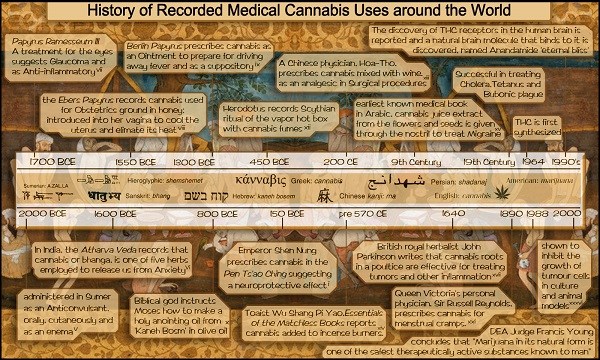
Neanderthal, Homo neanderthalensis, lived on Earth between 230,000 and 28,000 years ago. His last millennia of existence coincided with the appearance of Homo sapiens. During this time and over the past 1.5 million years, many species went extinct, including Homo floresiensis, which disappeared some 12,000 years ago.
Homo sapiens is the only surviving species of the genus Homo. Given the many races that interacted and evolved together, one can imagine how the plant could have traveled with humans crossing the Bering Strait, or even migrated by other routes. The oldest archaeological finds of cannabis have been found in Taiwan and date back about 10,000 years, while the oldest American cannabis remains date back to 3,000 B.C.
According to some theories, the Bering Strait may have frozen over, creating an ice bridge that ancient people from southern regions such as Africa used to cross to the New World. These nomadic tribes were pastoralists and many followed trade routes. But there were also mass migrations, often caused by natural disasters
The Clovis people
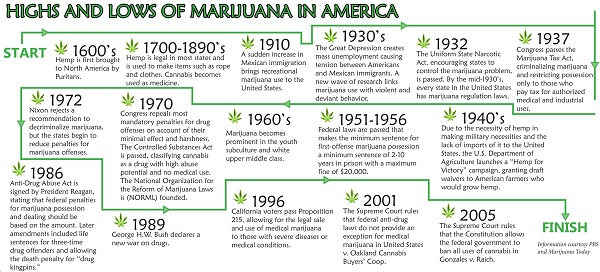
The Clovis culture, named after the town in New Mexico where it was first discovered, is one of the oldest human cultures in the New World. Research using radiocarbon analysis on a Pleistocene indigenous settlement found here indicates the age of the remains at 13,500 years. In addition, artifacts indicative of Clovis culture hunter activity have been found at El Fin del Mundo in the Mexican state of Sonora, dating back 13,000 B.C.
Although some archaeological finds appear to support the hypothesis of pre-Clovis settlement in the New World, much of the archaeological community maintains that Clovis people were among the first inhabitants of the Americas.
The generally accepted theory suggests that the earliest human settlement of the New World occurred when the Clovis people entered North America by crossing the Bering Strait over the Bering Land Bridge. This was the land connecting Siberia and Alaska at a time when sea levels dropped during the Ice Age. When the glaciers began to recede, the Clovis people moved south along the ice-free corridor east of the Rocky Mountains.
Nevertheless, a number of archaeological excavations have provided evidence of pre-Clovis populations in the Americas. In Central and South America, these sites point to much earlier cultures, and archaeologists have long shared this discovery through examples such as the Level I and Level II monuments at Monte Verde. They are located near Puerto Montt in Chile and were discovered in 1997. There is evidence of human presence at these sites, dating back to 13,000 B.C. and even more than 20,000 B.C.
Pre-Clovis in America

Despite this, numerous archaeological investigations have presented finds dating back to 13,000 B.C. and even more than 20,000 B.C.
The Argentine Stone Museum in Santa Cruz is an archaeological site opened around 1910 by Florentino Ameguino. Amegino, an archaeologist, classified the finds. In 2005, Laura Miotti, also from Argentina, analyzed remains dating back to 12,890 B.C.
The cave drawings were discovered by a group from Moscow in 1973. The artifacts, which date from 32,000 to 60,000 years B.C., were found at a site that was probably reached by thousands of primitive boats headed for the shores of modern-day Brazil. All this time the Clovis culture flourished in the north. There are even towns with African names along the Atlantic coast.
Another place where pre-Clovis remains have been discovered is the fortified refuge of Meadowcroft in Pennsylvania, dating back to 19,000 B.C. In Mexico, very old prints left by children in basalt volcanic ash have also been discovered.
Waves of migrants
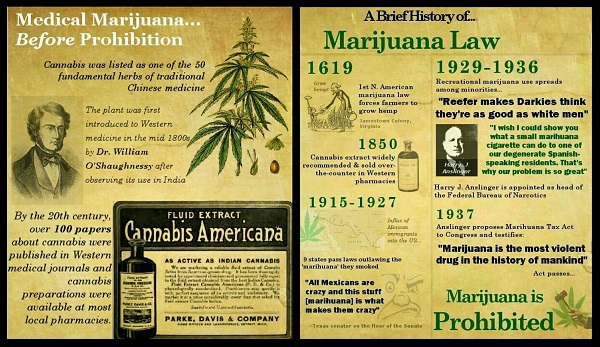
In spite of this, many archaeological investigations led to the discovery of the archaeological site, first discovered around 1910 by Florentino Amegino. Amegino, an archaeologist, classified these finds in 1973. Artifacts dating from 32,000 to 60,000 years B.C. were found, indicating that the first humans probably reached the shores of modern Brazil in thousands of primitive boats. At the same time, the culture of Clovis flourished in the north. Along the Atlantic coast, prints left by children in basalt volcanic ash can be found, dating back to 12,890 B.C.
The cave paintings were discovered by a Moscow team in 1973. The artifacts, dating from 32,000 to 60,000 B.C., indicate that the first humans probably reached the shores of modern Brazil in thousands of primitive boats. At the same time, the culture of Clovis flourished in the north. Along the Atlantic coast, prints left by children in basalt volcanic ash can be found. Various genetic characteristics have been identified. This is the most recent theory that changes the date of the arrival of the first humans, rejecting the idea of a single crossing of the Bering Strait and arguing that the appearance of humans could not have occurred earlier than 14,000 B.C.
However, if Homo sapiens used certain plants during their migrations, their use may have spread from one group to another.
Hemp in the New World
Discussing the question of migrations to the Americas, we find documentary references to the presence of Basque vessels in Mexico long before the arrival of Christopher Columbus.
The Phoenicians and Canaanites, who arrived in the Americas in 531 B.C., also used hemp. They most likely carried the seeds of this plant, as they could not grow crops to make candles and rope without them.
Although many people reject evidence of the presence of cannabis in the Americas before Columbus arrived, there are many samples of cloth, yarn, clothing, and bags made from this fiber. This shows how widely cannabis was used among the native tribes before Columbus arrived. It was mainly used for fabrics, sandals, fishing nets, ropes, mats and baskets, as well as in rituals and medicine. Today, the use of hemp has expanded, such as for the production of biofuels.
Hemp, as a dicot plant with separate male and female plants, has a high level of genetic variability, which makes it very adaptable and capable of change. It is an ideal species for colonizing new lands. The problem is that in many archaeological sites the fibers are not preserved and disappear.
Ethnologist W. H. Holmes of the Smithsonian Institution has confirmed not only the appearance of cannabis with the Vikings, but also its presence in the New World in prehistoric times. He suggests that it was carried by both humans and animals across the Bering Strait.
Evidence of the presence of cannabis has been found in the mound builders and pre-Columbian populations of North America who lived between 3000 B.C. and the 16th century A.D. in the Great Lakes and Mississippi River areas.
These peoples used cannabis in rituals and for cloth production, as evidenced by the discovery of hundreds of pipes and several large fragments of cloth. At their deaths, along with funerary objects, even reels of hemp thread used for sewing cloth were placed in their graves.
When Christopher Columbus reached the New World, each of his ships carried about 80 tons of hemp equipment and sails-a considerable amount. If cannabis was already growing in the New World at the time, its cultivation was limited to a few places and was not widespread among all the inhabitants.
Back to the present
In 1524, Italian explorer Giovanni da Verrazzano first spotted wild cannabis during his voyage to Virginia in North America. The French explorer Jacques Cartier noted seeing vast fields of wild hemp on each of his three expeditions to Canada in 1535, 1536, and 1541. In 1605, Samuel de Champlain mentioned that he observed the use of wild hemp by locals for fishing hooks. Hemp was not officially recognized as part of the flora of North America until 1606. In 1609 Henry Spelman, during his visit to Virginia with Thomas Heriot, described how the natives used hemp baskets to harvest corn.
Hemp, as a plant, has been essential to the survival of humankind throughout its millions of years of history, spreading across the globe and providing support through many eras. Certainly we will continue to follow the development of the restoration of cannabis history, and perhaps wonder about our historical legacy from time to time. For now, our goal is to spread the word about cannabis as a useful plant that can be used in a variety of ways and that has contributed to our adaptation and awakening.



